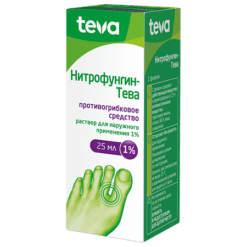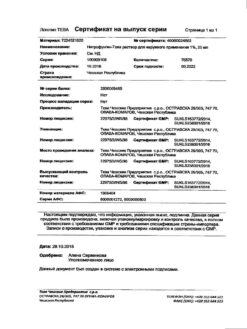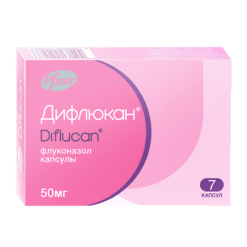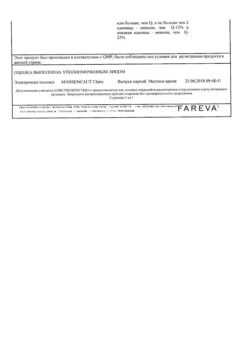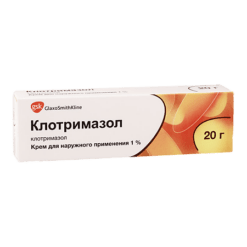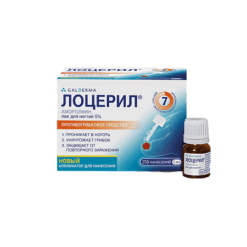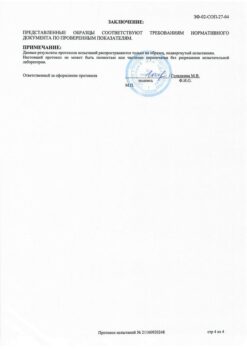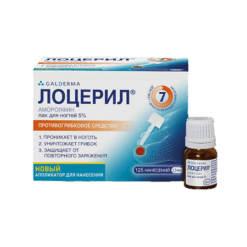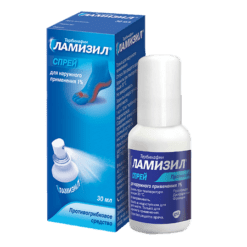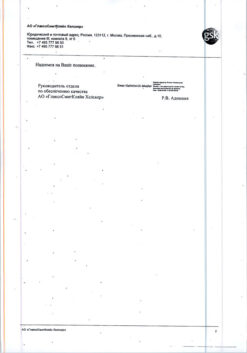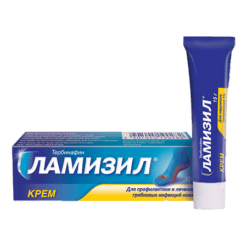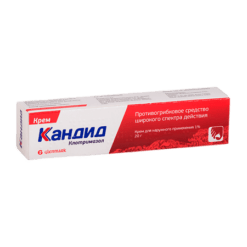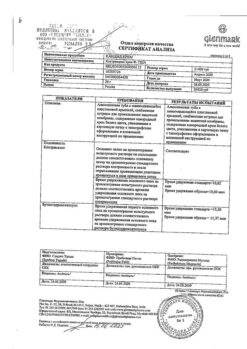No products in the cart.
Noxafil, 40 mg/ml suspension 105 ml
€1.00
Out of stock
(E-mail when Stock is available)
Description
Pharmgroup:
Antifungal drug.
Pharmic action:
Noxafil is an antifungal drug. Pozaconazole inhibits the enzyme lanosterol 14α-demethylase (CYP51), which catalyzes an important step in the biosynthesis of ergosterol, the main component of the cytoplasmic membrane of fungi. As a consequence, posaconazole has a wide range of antifungal activity. It is active against the causative agents of yeast and mold mycoses, including strains resistant to other antifungal drugs.
Pozaconazole is active against fungi of the genus Candida (incl. Candida albicans strains resistant to fluconazole, itraconazole and voriconazole, Candida glabrata and Candida kruseiy resistant or less sensitive to fluconazole, Candida lusitaniae resistant or less sensitive to amphotericin B), Aspergillus spp, resistant to fluconazole, voriconazole, itraconazole and amphotericin B). Pozaconazole, unlike other azole antifungal drugs, is active against zygomycosis pathogens (Absida spp., Mucor spp., Rhizopus spp., Rhizomucor spp.).
In in vitro experiments and in clinical studies posaconazole demonstrated activity against the following microorganisms: Aspergillus spp. (Aspergillus fumigatus, Aspergillus flavus, Aspergillus terreus, Aspergillus nidulans, Aspergillus niger, Aspergillus ustus, Aspergillus ochraceus), Candida spp. (Candida albicans, Candida glabrata, Candida krusei, Candida parapsilosis), Cryptococcus neoformans, Coccidioides immitis, Fonsecaea pedrosoi, Histoplasma capsulatum, Pseudallescheria boydii, Alternaria spp, Exophiala spp., Fusarium spp., Ramichloridium spp., Rhizomucor spp., Mucor spp., Rhizopus spp.
In in vitro experiments posaconazole also demonstrated activity against the following microorganisms: Candida spp. (Candida dubliniensis, Candida famata, Candida guiltiermondii, Candida lusitaniae, Candida kefyr, Candida rugosa, Candida tropicalis, Candida zeylanoides, Candida inconspicua, Candida lipolytica, Candida norvegensis, Candida pseudotropicalis), Cryptococcus laurentii, Kluyveromyces marxianus, Saccharomyces cerevisiae, Yarrowiali polytica, Pichia spp., Trichosporon spp., Aspergillus sydowii, Bjerkandera adusta, Blastomyces dermatitidis, Epidermophyton floccosum, Paracoccidioides brasiliensis, Scedosporium apiospermum, Sporothrix schenckii, Wangiella dermatitidis, Absida spp, Apophysomyces spp., Bipolaris spp., Curvularia spp., Microsporum spp., Paecilomyces spp., Penicillium spp., Trichophyton spp. However, the effectiveness and safety of posaconazole in the treatment of infections caused by these microorganisms have not been studied in clinical trials.
The laboratory has not been able to obtain strains of Candida albicans resistant to posaconazole. Spontaneously mutated laboratory strains of Aspergillus fumigatus, which showed decreased sensitivity to posaconazole, occurred at a frequency of 1×10-8 to 1×10-9. Clinical isolates of Candida albicans and Aspergillus fumigatus with reduced sensitivity to posaconazole are rare. In these rare cases, there is no clear correlation between decreased sensitivity to posaconazole and its clinical efficacy. There are known cases of clinical efficacy of posaconazole for mycoses caused by pathogens resistant to azole antifungals or amphotericin B, against which posaconazole was active in vitro. Criteria for the clinical significance of in vitro sensitivity of any fungi to posaconazole have not been established.
In studies of combinations of posaconazole with caspofungin or amphotericin B in vitro and in vivo there was little or no antagonism of antifungal drugs, in some cases an additive effect was noted. The clinical significance of the results of these studies is uncertain.
Pharmacokinetics:
Absorption
The duration of absorption of posaconazole is, on average, 3 to 5 h. Pozaconazole has linear pharmacokinetics with single or multiple doses up to 800 mg. There is no increase in pharmacokinetic parameters when using posaconazole in doses more than 800 mg/day. Changes in gastric pH have no effect on the absorption of posaconazole. Splitting the daily dose of posaconazole (400 mg 2 times per day) leads to an increase in pharmacokinetic parameters by 184% compared to a single dose of 800 mg.
In comparison with fasting food intake, the AUC of posaconazole is increased approximately 2.6-fold when taken with a low-fat food or food supplements (14 g of fat), and 4-fold when taken with a fatty food (approximately 50 g of fat).
Distribution
Pozaconazole has a high Vd (1114 L), indicating widespread tissue penetration of the drug. More than 98% of the drug is bound to proteins, mainly blood plasma albumin.
The equilibrium state is reached after 7-10 days of repeated use of the drug.
Metabolism
Pozaconazole does not form active circulating metabolites, and its concentration is unlikely to change under the influence of P450 isoenzyme inhibitors. Of the circulating metabolites, the bulk are glucuronide conjugates of posaconazole and a small proportion of oxidized (via P450) metabolites. Excretion of metabolites through the kidneys and through the intestine is approximately 17% of the administered dose.
Pozaconazole is slowly excreted from the body, the average T1/2 is 35 h (20 to 66 h) and total clearance is 32 l/h. The drug is excreted primarily through the intestine (77%), with the main part (66%) accounting for the active substance. Renal clearance is a negligible part of the elimination, approximately 14% (the active substance is less than 0.2%).
Pharmacokinetics in Special Clinical Cases
After administration of pozaconazole at a daily dose of 800 mg divided into several doses, the plasma concentration of the drug in patients aged 8-17 years was comparable to that in patients aged 18-64 years (average, 776 ng/mL and 817 ng/mL, respectively). No pharmacokinetic data were available for children younger than 8 years of age.
In the elderly (over 65 years), a 26% increase in Cmax and 29% increase in AUC was observed compared to those aged 18-45 years. However, in clinical trials, the safety values of posaconazole in young and elderly people were similar. Therefore, no dose adjustments based on age are necessary.
The pharmacokinetics of posaconazole do not differ in men and women. There is no need to change the dose of the drug according to sex.
There was a small (16%) decrease in AUC and Cmax of posaconazole in people of non-human race. There is no need to adjust the dose according to race.
On a single dose of posaconazole mild to moderate renal failure (n=18, CKR >20 ml/min/1.73 m2) had no effect on the pharmacokinetics of the drug, so no dose adjustment is required in this patient population. In patients with severe renal insufficiency (n=6, CKU of patients with hepatic insufficiency there was observed prolongation of T1/2 (26.6 h, 35.3 h and 46.1 h – for mild, moderate and severe hepatic insufficiency according to Child-Pugh, respectively), compared to patients with normal hepatic function (22.1 h). Due to limited pharmacokinetic data, there are no recommendations for dose adjustment in patients with hepatic impairment.
Indications
Indications
Prevention of invasive fungal infections in immunocompromised and at increased risk for such infections, such as in hematological patients with prolonged neutropenia due to chemotherapy, and in recipients of hematopoietic stem cell transplants receiving high doses of immunosuppressants.
Treatment of invasive fungal infections:
– invasive candidiasis or esophageal candidiasis refractory to amphotericin B, itraconazole or fluconazole, or with intolerance to these medications;
– invasive aspergillosis refractory to amphotericin B or itraconazole, or with intolerance to these medications;
– Zygomycosis (mucormycosis), cryptococcosis, refractory to other antifungal drugs or intolerant to them;
– Fusarium, refractory to amphotericin B or intolerant to it;
– chromomycosis and mycetoma, refractory to itraconazole or with its intolerance;
– coccidioidosis, refractory to amphotericin B, itraconazole or fluconazole or with intolerance to these medicines.
Refractoriness is the progression of the infection or lack of improvement of the patient’s condition after treatment within 7 days (within 3 days for candidemia, within 14 days for esophageal candidiasis, and within 7 days for other forms of invasive candidiasis).
Treatment of oropharyngeal candidiasis – first-line therapy in patients with severe disease or with reduced immunity in whom no significant effect of local medications is expected.
Active ingredient
Active ingredient
Composition
Composition
1 ml:
– pozaconazole (micronized) 40 mg
Supplementary substances:
Polysorbate 80,
simethicone,
sodium benzoate,
glycerol,
xanthan gum,
liquid dextrose,
/p>
titanium dioxide,
cherry flavoring (#13174),
purified water.
How to take, the dosage
How to take, the dosage
The drug should be taken orally with food. Patients who cannot combine taking the drug Noxafil with normal food should take the drug simultaneously with the intake of liquid food supplements to improve absorption of posaconazole. The suspension should be shaken thoroughly before use.
– For prevention of invasive fungal infections, the drug is prescribed at 200 mg (5 ml) 3 times/day. Duration of prophylactic treatment depends on the duration of neutropenia in hematological patients or the severity of immunosuppression in recipients of hematopoietic stem cell transplants. In patients with acute myeloid leukemia or myelodysplastic syndrome prophylactic treatment with Noxafil should be started several days before the expected onset of neutropenia and continued for 7 days after neutrophil count increases to more than 500/ml.
– For treatment of invasive fungal infections refractory to other antifungal medications or if other antifungal medications are intolerant, 400 mg (10 ml) 2 times daily is indicated. Patients who cannot take the drug with food or food supplements are recommended to take Noxafil 200 mg (5 ml) 4 times per day. The therapy duration depends on the severity of the patient’s underlying disease, severity of immunodeficiency and efficacy of the treatment carried out.
– For treatment of oropharyngeal candidiasis it is prescribed 200 mg (5 ml) 1 time/day. – on the first day of treatment (introductory dose), then 100 mg (2.5 ml) once daily for the next 13 days.
– For treatment of oropharyngeal candidiasis refractory to itraconazole and/or fluconazole, administer 400 mg (10 ml) 2 times/day. The duration of therapy depends on the severity of the patient’s underlying disease and the effectiveness of the ongoing treatment.
The increase in dose of Knoxafil more than 800 mg/day does not increase the effectiveness of treatment.
There are no changes in pharmacokinetic parameters with impaired renal function; therefore, no dose adjustment is required with impaired renal function.
In impaired hepatic function there are limited relevant pharmacokinetic data, so there are no recommendations for dose adjustment in this group of patients. An increased T1/2 of posaconazole has been observed in a small number of patients with impaired hepatic function.
Interaction
Interaction
Pozaconazole is metabolized by glucuronidation and is a substrate for p-glycoprotein (in vitro), so inhibitors (verapamil, cyclosporine, quinidine, clarithromycin, erythromycin, etc.) or inducers (rifampicin, rifabutin; anticonvulsants – phenytoin, carbamazepine, benobarbital; cimetidine.) or inducers (rifampicin, rifabutin; anticonvulsants – phenytoin, carbamazepine, phenobarbital, primidone; cimetidine and others) of this metabolic pathway may increase or decrease plasma concentration of posaconazole.
Efavirenz (400 mg once daily) reduces Cmax and AUC of posaconazole by 45% and 50%, respectively.
Rifabutin (300 mg once daily) reduces Cmax and AUC of posaconazole by 57% and 51%, respectively. When co-administration of posaconazole and rifabutin or similar inducers (rifampicin) the benefit and risk for this patient should be assessed.
Phenytoin (200 mg once daily) decreases Cmax and AUC of posaconazole by 41% and 50% respectively. When co-administering posaconazole and phenytoin or similar inducers (carbamazepine, phenobarbital, primidone), the benefit and risk to this patient should be assessed.
H2-histamine receptor blockers (cimetidine 400 mg 2 times daily) or proton pump inhibitors decrease Cmax and AUC of posaconazole by 39%. The effect is associated with decreased absorption of the drug against the background of decreased acidity of gastric juice. If pozaconazole and cimetidine are used together, the benefit and risk to this patient should be assessed.
Pozaconazole (200 mg once daily), as a CYP3A4 inhibitor, increases the AUC of intravenous midazolam (a substrate of the CYP3A4 isoenzyme) by 83%.
The effect of posaconazole on plasma concentrations of CYP3A4 substrates when administered orally has not been studied, but can be expected to be more pronounced than when the substrates are administered v/v
. Caution should be exercised when co-administering posaconazole and CYP3A4 isoenzyme substrates administered v/v or orally, which may require dose reduction of CYP3A4 isoenzyme substrates.
Pozaconazole increases the blood concentration of barvinic alkaloids (vincristine, vinblastine) – risk of neurotoxic effect. Their combined use should be avoided if the benefits of combined therapy do not exceed its risk for this patient. If coadministration is necessary, it is recommended to adjust the dose of barvinquine alkaloids.
Pozaconazole increases Cmax and AUC of rifabutin by 31% and 72%, respectively. Co-administration should be avoided unless the benefits of combination therapy exceed its risk for this patient. If their combined use is necessary, it is recommended to monitor the blood count and the occurrence of side effects of rifabutin (uveitis).
Pozaconazole at a dose of 200 mg once daily increases the blood concentration of cyclosporine, which may increase the risk of serious adverse effects, including nephrotoxic reactions or fatal leukoencephalopathy (1 case). It is recommended that cyclosporine blood concentrations be monitored before, during, and after treatment with posaconazole, changing the dose of cyclosporine if necessary.
Pozaconazole increases Cmax and AUC of tacrolimus (single dose – 0.05 mg/kg) by 121% and 358%, respectively. When they are co-administered, the dose of tacrolimus should be reduced (to 1/3 of the dose). Blood concentrations of tacrolimus should be carefully monitored during and after their co-administration, and the dose should be adjusted if necessary.
Pozaconazole (400 mg twice daily for 16 days) increases Cmax and AUC of sirolimus (2 mg once daily) by a factor of 6.7 and 8.9, respectively. When they are used together, the dose of sirolimus should be reduced (by 1/10 of the recommended dose). It is recommended to monitor sirolimus blood concentrations before, during and after treatment with posaconazole. Adjust the sirolimus dose if necessary.
Pozaconazole increases non-nucleoside reverse transcriptase inhibitors (antiretroviral drugs that are substrates of CYP3A4 isoenzyme). If they are used together, patients should be closely monitored for possible toxic reactions.
Pozaconazole increases HIV protease inhibitors in blood. Pozaconazole (400 mg twice daily for 7 days) in combination with atazanavir (300 mg once daily for 7 days) increases Cmax and AUC of atazanavir 2.6-fold and 3.7-fold, respectively. When ritonavir (100 mg ritonavir once daily for 7 days) is added to this combination, the Cmax and AUC of atazanavir are increased 1.5-fold and 2.5-fold, respectively. People taking posaconazole should be closely monitored for possible toxic reactions.
Pozaconazole (200 mg twice daily for 7 days) in combination with midazolam (0.4 mg iv iv once daily) increases Cmax and AUC of midazolam by 1.3 and 4.6 times accordingly.
Pozaconazole (400 mg twice daily for 7 days) in combination with midazolam (0.4 mg v/v once daily) increases Cmax and AUC of midazolam 1.6-fold and 6.2-fold, respectively.
The two dosing regimens of posaconazole increase the Cmax and AUC of midazolam administered orally at a dose of 2 mg once daily by a factor of 2.2 and 4.5, respectively.
The use of posaconazole in doses of 200 mg and 400 mg increases T1/2 of midazolam from 3-4 h to 8-10 h when used together.
Caution should be exercised when prescribing other benzodiazepines, which are metabolized by CYP3A4 isoenzyme, in patients receiving posaconazole.
When co-administration of posaconazole with PBMC (diltiazem, verapamil, nifedipine, nisoldipine) it is necessary to monitor adverse and toxic reactions associated with the action of PBMC and, if necessary, to adjust their doses.
Co-administration of posaconazole with digoxin may increase digoxin concentrations, which should be monitored during and at the end of combined therapy.
In co-administration of glipizide and posaconazole a decrease in glucose concentration was noted. It is recommended to monitor blood glucose concentrations in diabetic patients receiving sulfonylureas and posaconazole concomitantly.
No antagonism was found in combinations of posaconazole with caspofungin or amphotericin in vitro and in vivo, in some cases an additive effect was noted.
Special Instructions
Special Instructions
Treatment should be initiated by a physician experienced in treating systemic fungal infections.
Before treatment begins, the patient should be given material for microbiological and other laboratory tests to identify the causative agent. Treatment could be started without waiting for the results of these tests, but once the results are available, the antifungal therapy could be adjusted if necessary.
There is no information about cross-sensitivity between posaconazole and other antifungal azole compounds. Caution should be exercised when prescribing Noxafil to patients with hypersensitivity to other azoles.
In treatment with posaconazole, there have been reports of changes in liver function (e.g., mild to moderate increases in serum ALT, ACT, ALP, and total bilirubin levels) during treatment with posaconazole. These reactions were observed mainly in patients with severe background diseases (e.g., oncohematological diseases), and they were not a reason to discontinue therapy. The increase in liver function tests was reversible and was completed after discontinuation of therapy, and in some cases, normalization of functional parameters was observed before discontinuation of therapy. In rare cases, severe liver reactions with lethal outcome have developed. Caution should be exercised when prescribing posaconazole to patients with severe liver dysfunction. In these patients, prolongation of the half-life of the drug may lead to increased potency.
Patients with hepatic dysfunction during Noxafil therapy according to laboratory data should be under clinical observation to prevent development of more serious liver damage. Surveillance should include laboratory monitoring of liver function (in particular, determination of serum ALT, ACT, ALP and total bilirubin levels).
Some azole compounds cause prolongation of the QT interval. Noxafil should not be administered together with drugs that are substrates for CYP3A4 isoenzyme and prolong the QT interval. Caution should be exercised when prescribing Knoxafil in patients at high risk of cardiac arrhythmias, e.g:
– in congenital or acquired prolongation of the QT interval;
– in the presence of cardiomyopathy, especially in combination with heart failure;
– in sinus bradycardia;
– in diagnosed symptomatic arrhythmia;
– in case of taking QT interval prolongation drugs (except for those specified in section “Contraindications”).
The electrolyte balance, especially the potassium, magnesium, and calcium content should be monitored and, if necessary, corrected before and during pozaconazole therapy.
Pozaconazole is an inhibitor of CYP3A4 and if the patient is already taking medications metabolized by CYP3A4, posaconazole should only be used in special circumstances.
The concentration of posaconazole may be significantly reduced when used in combination with rifamycin antibacterials (rifampicin, rifabutin), anticonvulsants (phenytoin, carbamazepine, phenobarbital, primidone) and cimetidine. Therefore, their co-administration with posaconazole should be avoided, if the benefits of co-administration do not exceed the risk to the patient.
The recommended daily dose of Noxafil contains approximately 7 g of glucose. The drug should not be administered to patients with malabsorption syndrome (impaired glucose/galactose absorption).
The data on pharmacokinetics of the drug in patients with severe gastrointestinal dysfunction which may lead to decreased blood concentration of the drug (e.g., severe diarrhea or vomiting) are limited. These patients should be closely monitored for timely detection of possible activation of fungal infection.
Pediatric use
The efficacy and safety of Noxafil in children under 13 years of age have not been established.
Influence on driving and operating ability
There are no data on the effect of Noxafil on the ability to drive and operate vehicles.
Contraindications
Contraindications
– co-administration with ergot alkaloids (due to the risk of increased blood concentrations of ergot alkaloids and development of ergotism);
– Co-use with substrates of CYP3A4 isoenzyme terfenadine, astemizole, cisapride, pimozide, halofantrine, or quinidine (due to the risk of increasing concentrations of these drugs in blood, subsequent prolongation of QTc interval and, in rare cases, development of ventricular tachycardia of “pirouette” type;
– co-administration with HMG-CoA reductase inhibitors simvastatin, lovastatin and atorvastatin (due to the risk of increasing concentrations of these drugs in blood and development of rhabdomyolysis);
– hypersensitivity to any component of the preparation Noxafil.
. The drug should be used with caution in case of history of hypersensitivity to other azole compounds, severe hepatic impairment, congenital or acquired prolongation of QTc interval, cardiomyopathy, especially in combination with cardiac insufficiency, sinus bradycardia, diagnosed symptomatic arrhythmias, concomitant use with agents that prolong the QTc interval (other than those listed under “Contraindications”), due to increased risk of cardiac arrhythmias.
Side effects
Side effects
The following are all treatment-related adverse events reported in studies including 2,400 patients; of these, 172 patients received posaconazole for at least 6 months and 58 patients received posaconazole for at least 12 months.
The most frequent adverse events were nausea (6%) and headache (6%).
Serious adverse events reported (with a frequency of 1% each) in patients with invasive mycoses included changes in other drug concentrations, increased liver enzymes, nausea, rash, and vomiting.
Serious adverse events reported (with a frequency of 1% each) in patients receiving posaconazole to prevent invasive mycoses included hyperbilirubinemia, increased hepatic enzymes, hepatocyte damage, nausea, and vomiting.
A single case of pirouette ventricular tachycardia was reported in a critically ill patient who had multiple risk factors that together may have led to this complication, such as arrhythmia, recent cardiotoxic chemotherapy, a history of hypokalemia and hypomagnesemia.
Rare cases of hemolytic-uremic syndrome and thrombotic thrombocytopenic purpura have been noted primarily in patients who received cyclosporine or tacrolimus in addition to treatment of the underlying disease to prevent transplant rejection.
The side effects of posaconazole are classified by frequency: frequently (>1/100, but 1/1000, but 1/10,000, but
Hematopoietic system side effects: frequent – neutropenia; infrequent – thrombocytopenia, leukopenia, anemia, eosinophilia, lymphadenopathy; rare – hemolytic-uremic syndrome, thrombotic thrombocytopenic purpura, pancytopenia, blood clotting disorders, bleeding (unspecified).
Immune system disorders: infrequent allergic reactions; rarely – Stevens-Johnson syndrome, hypersensitivity reactions.
Endocrine system disorders: rare – adrenal insufficiency, decreased gonadotropin levels.
CNS disorders: frequent – paresthesia, dizziness, somnolence, headache; infrequent – seizures, neuropathy, hypoesthesia, tremor; rare – psychosis, depression, fainting, encephalopathy, peripheral neuropathy.
An organ of vision: infrequent – blurred vision; rarely – diplopia, scotoma.
Hearing organ: rarely – hearing impairment.
Cardiovascular system: infrequent – prolongation of QTc/QT interval, abnormal ECG, palpitations, increased or decreased blood pressure; rarely – ventricular tachycardia (including pirouette). pirouette type), sudden death, cardiac and respiratory arrest, heart failure, myocardial infarction, stroke, pulmonary embolism, deep vein thrombosis (unspecified).
Respiratory system disorders: rarely – pulmonary hypertension, interstitial pneumonia, pneumonitis.
Digestive system disorders: frequent – anorexia, vomiting, nausea, abdominal pain, diarrhea, dyspepsia, flatulence, dry mouth, bloating, increased liver functional parameters (including ALT, ACT, bilirubin, ALF, GGT); infrequent – ulceration of oral mucosa, pancreatitis, damage to hepatocytes; rarely – gastrointestinal bleeding, bowel obstruction, liver failure, cholestatic hepatitis, cholestasis, hepatosplenomegaly, liver pain, asterixis (liver tremor), severe liver damage with fatal outcome.
Dermatological reactions: common – rash; infrequent – alopecia; rare – vesicular rash.
Muscular system disorders: infrequent – back pain.
Urinary system disorders: infrequent – renal failure (including acute), increased blood creatinine; rarely – interstitial nephritis, renal tubular acidosis.
With the sexual system: infrequent – menstrual irregularities; rarely – pain in the breast.
Laboratory disorders: infrequent – changes in serum concentrations of other drugs.
Others: often – fever, asthenia, fatigue, electrolyte imbalance; infrequent – hyperglycemia, edema, weakness, pain, chills, malaise; rarely – tongue swelling, facial edema.
Overdose
Overdose
Patients receiving posaconazole at doses up to 1600 mg/day showed no additional adverse events compared to those receiving lower doses. An accidental overdose was reported in one patient who took Noxafil at 1200 mg twice daily for 3 days. No adverse events related to overdose were noted in this patient.
Pozaconazole is not excreted by hemodialysis.
Additional information
| Manufacturer | Pateon Inc, Canada |
|---|---|
| Medication form | oral suspension |
| Brand | Pateon Inc |
Related products
Buy Noxafil, 40 mg/ml suspension 105 ml with delivery to USA, UK, Europe and over 120 other countries.


